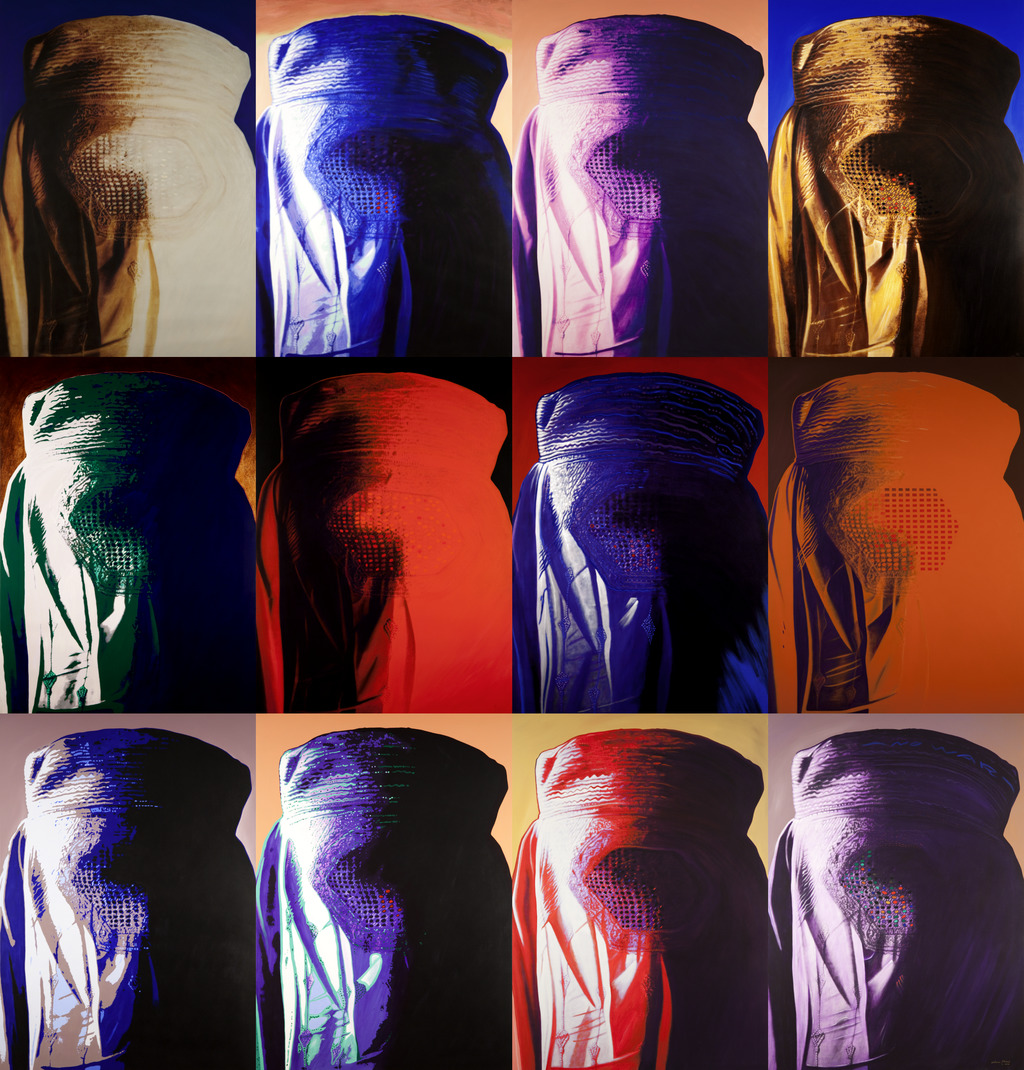Burka políptic (Burka polyptych)
Antoni Miró’s artistic output forms part of the “Sense Títol” (Untitled) series throughout the first decade of the 21st Century. The artist covers several themes, all of them of a very diverse nature. They include: poverty; immigration; war; memory; museums. Nevertheless, they all share their constitution as generic images. For instance, they form a set of visions of our complex contemporary world, which do not surprise the viewer, despite their harshness. That is because of the fact that one of the characteristics of the many terrible and compelling problems besetting Mankind today is the familiarity with which we regard them.
The enormous degree of submission and cancellation of personality that Afghan women have to endure results in the denial of their appearance with the compulsory use of the Burka. Islamic fundamentalism runs counter to Western democratic values. A clash of civilisations is inevitable in a world with ever-growing migratory flows. In fact, in 2009, the refusal of a witness to testify before Spain’s National Court in a trial in order not to reveal her face proved highly controversial. At the time, a Religious Freedom Act was being drafted to deal with this type of situation. More than ethnic or religious in nature, the Burka could well become an excuse for political affirmation in such cases. The phonological similarity between the Valencian words for ‘polyptych’ and ‘politic’ is undoubtedly why the artist chose the ironic title for the work.
Antoni Miró makes a nod here to one of Warhol’s compositional strategies. The repetition of pictures of some pop icons with the only differential factor being their chromatic treatment is, in this case, portrayed based on a contradictory image, regarding its portrait qualities, as it denies the representation of the female face. The artist has taken a motif that is highly controversial, drastically changing its shades to create artificial diversity.
Thus, the purplish blue of the original garment becomes, for instance, deep red, green, gold. Something similar occurs with the backgrounds, which range from light blue to flat black, passing through several shades of brown. Once this new repertoire is created, the different faces are gathered in a mosaic, which forms a vibrant ensemble spawned from an unpromisingly harsh base image.
Santiago Pastor Vila
